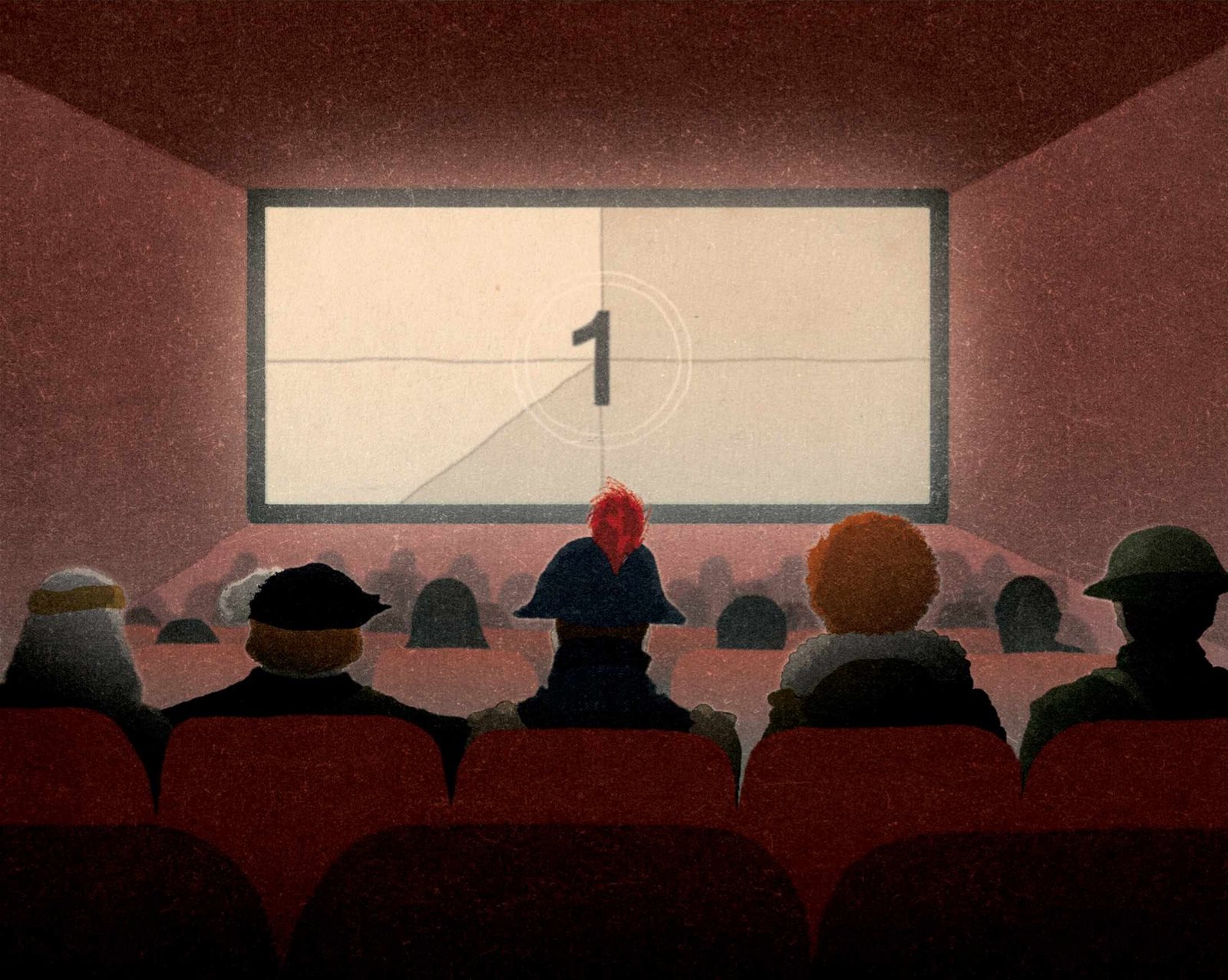
ILLUSTRATION BY HUGH COWLING
W
e
asked 22 leading historians to make the case for up to five historical films that they deemed the greatest – with the resulting list of 100 titles depicting a diverse range of periods, places and people. We then asked visitors to our website to vote for their favourites (you can find the full results at
historyextra.com/100movies
). Here we reveal the top 20…
20
A Knight’s Tale
Set in 14th-century England, this 2001 film stars Heath Ledger as William Thatcher, a fictional peasant squire who poses as a knight. It scores poorly on historical accuracy and high on anachronism (medieval crowds sing Queen’s ‘We Will Rock You’, for instance). Yet, via wit and a brilliant cast, it captures the thrill of medieval tournaments, translated effectively for modern audiences.
Alice Loxton, author of Eighteen: A History of Britain in 18 Young Lives (Macmillan, 2024)
19
Titanic
There’s plenty for history lovers to admire in this 1997 blockbuster, which sets a doomed fictional romance against the tragic sinking of RMS Titanic in April 1912. The recreation of the ship was painstaking, while the portrayal of how it sank was based on maritime archaeology at the wreck. It takes creative liberties, but this box-office titan offers visual spectacle and an emotional punch.
Emily Brand, historian and author of The Fall of the House of Byron (John Murray, 2020)
18
Hidden Figures
The story of the space race as told from the point of view of its unsung heroes – the African-American women who did much of the maths. This 2016 film takes considerable liberties with the historical source material (it’s loosely based on a book of the same name), but nevertheless succeeds in capturing something of the reality of racial and sexual politics of the US of the 1960s.
Marc Morris, historian and author of books including The Anglo-Saxons: A History of the Beginnings of England (Hutchinson, 2021)
17
Dunkirk
Christopher Nolan’s 2017 epic intertwines numerous fictional narratives to portray the horror of the British evacuation from Dunkirk in 1940. It goes to unusual lengths to recreate a realistic atmosphere, eschewing CGI in favour of location filming, and evokes the lived experience rather than the intricacies of Operation Dynamo. Poignant moments, including the ‘little ship’ rescues and soldiers walking into the sea, were inspired by historic record and eyewitness testimony.